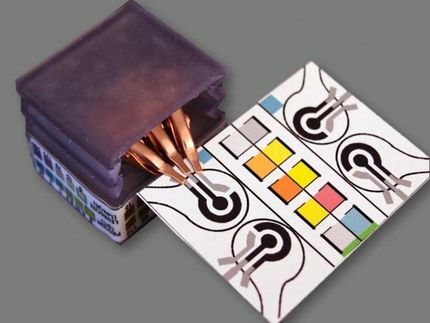Glow sticks – Not just for parties anymore
University of Houston researcher using popular party favor to detect biothreats for US Navy
Remember that party where you were swinging glow sticks above your head or wearing them as necklaces? Fun times, right? Science times, too. Turns out those fun party favors are now being used by a University of Houston researcher to identify emerging biothreats for the United States Navy.

Richard Willson, Huffington-Woestemeyer Professor of chemical and biomolecular engineering at the University of Houston, is adapting technology of glow sticks to excite fluorescent particles to increase their detectability.
University of Houston
It’s not the odd combination it may seem at first glance. Largely due to climate change, the environmental niches that can be occupied by threat-producing species are expanding. As environmental biothreats increase, so does their accessibility and potential concern from a biodefense perspective. Currently, there is a need to detect and diagnose certain emerging biothreats, especially in far-forward settings.
“We are for the first time applying the shelf-stable, low-toxicity, low-cost chemistry of common glow sticks to develop bright and rapid diagnostic tests called lateral flow immunoassays (LFIs) like fluorescent-dyed nanoparticles that, when exposed to glow stick activation chemicals, emit bright visible light that can be readily imaged using a smartphone or simple camera,” said Richard Willson, Huffington-Woestemeyer Professor of chemical and biomolecular engineering at the University of Houston. “We will adapt the technology of glow sticks widely used in military signaling applications to excite fluorescent LFI particles to increase their detectability.”
The humble glow stick
Here’s how they work: When you bend a common glow stick, it breaks a small glass container inside holding a mix of 3% hydrogen peroxide and another substance. This mix reacts with a chemical stored outside the glass, creating a new substance that is quite reactive. When it collides with special colorful dyes, it gives them energy and makes them light up.
That’s usually the time you lose interest in them and toss them away – but not so for Willson, who has entered into an agreement with the U.S. Navy, with the future potential to receive task orders of $1.3 million, to develop improved rapid detection technology for emerging biothreats to support forward deployable testing efforts and develop high affinity reagents for the new technology. High affinity reagents are substances or molecules that exhibit a strong and specific attraction or binding to a particular target
Accessibility of technology
The COVID-19 pandemic emphasized the need for rapid, inexpensive and ultrasensitive immunoassays for point-of-care diagnostic applications. Lateral flow immunoassays such as the home pregnancy test and COVID-19 rapid antigen test are successfully used by untrained persons to detect medically important chemicals but have limited analytical sensitivity and typically detect only a single chemical.
“Our novel Glow LFIs are very sensitive; preliminary results for Glow LFI detection of SARS-CoV-2 nucleoprotein spiked in nasal swab extract show an unoptimized limit of detection of 100 picograms per milliliter, already better than typical LFIs,” said Willson, whose research with the glow stick method also shows detection of other known biothreats.
As part of the ongoing research Willson will also develop a pipeline to produce new high-affinity reagents to be employed in these new detection assays.
See the theme worlds for related content
Topic world Diagnostics
Diagnostics is at the heart of modern medicine and forms a crucial interface between research and patient care in the biotech and pharmaceutical industries. It not only enables early detection and monitoring of disease, but also plays a central role in individualized medicine by enabling targeted therapies based on an individual's genetic and molecular signature.

Topic world Diagnostics
Diagnostics is at the heart of modern medicine and forms a crucial interface between research and patient care in the biotech and pharmaceutical industries. It not only enables early detection and monitoring of disease, but also plays a central role in individualized medicine by enabling targeted therapies based on an individual's genetic and molecular signature.






























































